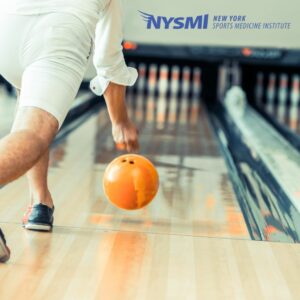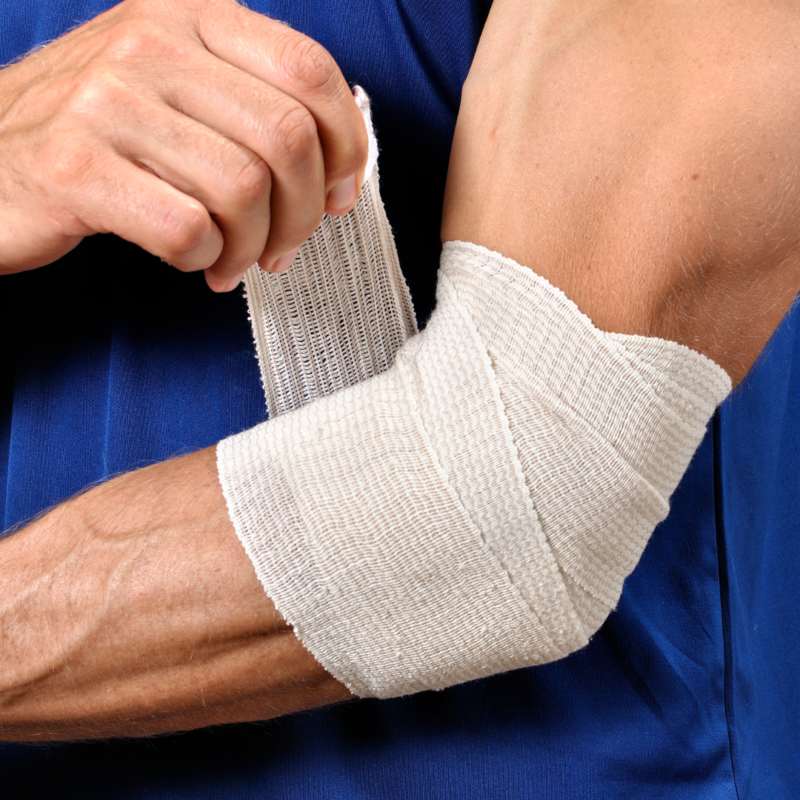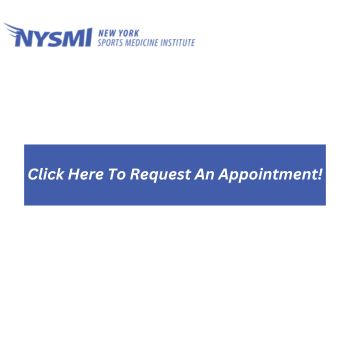
Elbow Treatment in Paramus

Welcome to New York Sports Medicine Institute, where expert care meets cutting-edge technology to get you back to your best self. Our dedicated team specializes in diagnosing and treating a wide range of elbow issues, from sports injuries to chronic conditions. At our state-of-the-art facility, we combine personalized treatment plans with the latest advancements in medical science. Whether you’re dealing with pain, stiffness, or limited mobility, we are here to provide compassionate and effective solutions through elbow treatment in Paramus that is tailored to your needs. Discover how our comprehensive approach can help restore your elbow function and improve your quality of life today.
Bowler’s Elbow – Causes, Symptoms, and Treatment
Bowler’s elbow, also known as medial epicondylitis, is a condition that affects many people, not just athletes. This condition can cause significant discomfort and limit your ability to perform everyday activities. At New York Sports Medicine Institute, our team of specialists offer elbow treatment in Paramus and are dedicated to diagnosing and treating bowler’s elbow to ensure you can return to your daily routine without pain. Dr. Neil Roth and our experts are here to share crucial information about bowler’s elbow, its causes, symptoms, and effective treatment options.

UNDERSTANDING BOWLER’S ELBOW
Bowler’s elbow is a form of tendinitis that affects the inner part of the elbow. It occurs due to inflammation of the tendons that attach the forearm muscles to the bony prominence on the inside of the elbow. This condition is similar to golfer’s elbow but specifically affects those who engage in activities that require repetitive wrist flexion and forearm pronation, such as bowling. Elbow pain can be caused by various conditions, including tendinitis, arthritis, and nerve compression. Symptoms often include pain, tenderness, swelling, and difficulty moving the joint. Recognizing the signs and symptoms early can help you seek prompt elbow treatment in Paramus preventing further damage and facilitating a quicker recovery.
CAUSES OF BOWLER’S ELBOW
Bowler’s elbow is primarily caused by overuse and repetitive stress on the elbow joint. Some common activities and factors that can lead to the development of bowler’s elbow include:
- Bowling
- Manual Labor
- Sports
- Improper Technique
- Aging
RECOGNIZING THE SYMPTOMS OF BOWLER’S ELBOW
Identifying the symptoms of bowler’s elbow early is crucial for effective treatment. While the severity of symptoms can vary, some common signs include:
- Pain and Tenderness: Pain and tenderness on the inner side of the elbow, which may radiate down the forearm, are the most common symptoms. The pain can be sharp or dull and may worsen with activity.
- Stiffness: Stiffness in the elbow joint, particularly in the morning or after periods of inactivity, is a common symptom of bowler’s elbow.
- Weakness: A noticeable weakness in the affected arm, especially when trying to grip or lift objects, is a significant symptom. This weakness can hinder your ability to perform daily tasks.
- Numbness or Tingling: Some individuals may experience numbness or tingling sensations in the fingers, which can be a sign of nerve involvement.
- Swelling: Swelling around the elbow joint, though less common, can also occur in some cases of bowler’s elbow.
WHEN TO SEEK ELBOW TREATMENT IN PARAMUS
If you suspect you suffer from bowler’s elbow, it’s crucial to seek medical attention promptly. Resting and icing the injury may provide temporary relief, but professional evaluation and treatment are necessary for a full recovery. Contact New York Sports Medicine Institute if you experience:
- Persistent Pain: Ongoing pain that doesn’t improve with rest and ice indicates the need for a professional assessment.
- Severe Weakness: Difficulty using the affected arm for daily activities necessitates professional intervention.
- Numbness or Tingling: These symptoms could indicate nerve involvement and should be evaluated with elbow treatment in Paramus.
DIAGNOSIS AND TREATMENT
Upon visiting New York Sports Medicine Institute, our team will conduct a thorough examination to confirm the diagnosis of bowler’s elbow and provide elbow treatment in Paramus. This may include physical assessments and imaging tests such as MRI or ultrasound to determine the extent of the injury.
NON-SURGICAL TREATMENT
For many patients, non-surgical treatment is effective in managing bowler’s elbow. This includes:
- Rest and Immobilization: Allowing the tendons to heal by resting and avoiding activities that strain the elbow.
- Physical Therapy: A tailored rehabilitation program designed to restore strength and flexibility to the elbow.
- Pain Management: Medications and other modalities to manage pain and inflammation.
- Brace or Support: Using a brace or elbow support to reduce strain on the tendons during activities.
SURGICAL TREATMENT
In cases where conservative treatments are not effective, surgery may be necessary. Our specialists will perform procedures to repair the damaged tendons and alleviate symptoms, followed by a comprehensive rehabilitation program to ensure a successful recovery with elbow treatment in Paramus.
RECOVERY AND PREVENTION
Recovery from bowler’s elbow varies depending on the severity of the condition and the treatment approach. Adhering to the prescribed rehabilitation plan is crucial for regaining full function and preventing future injuries. To minimize the risk of bowler’s elbow, individuals should:
- Warm-Up Properly: Engaging in dynamic warm-up exercises before physical activities to prepare the muscles.
- Use Proper Technique: Ensuring correct form during activities to reduce strain on the elbow.
- Gradually Increase Intensity: Avoiding sudden increases in activity intensity or duration to prevent overloading the tendons.
CONTACT NEW YORK SPORTS MEDICINE INSTITUTE – ELBOW TREATMENT IN PARAMUS
Recognizing the warning signs of bowler’s elbow and seeking prompt elbow treatment in Paramus can make a significant difference in your recovery. If you suspect bowler’s elbow, don’t hesitate to contact us for a thorough evaluation and personalized treatment plan.
Can An Elbow Tendon Heal Itself?
A torn elbow tendon is no fun. Typically resulting from employment or sports injuries, it can be challenging to function with your arm after having the tendon break. Usually, any movement requiring the bending of the arm will be difficult at best and impossible at worst. However, if you tear your elbow tendon and need elbow treatment in Paramus, contact New York Sports Medicine Institute today!

What Is A Torn Elbow Tendon?
A torn elbow tendon is when the tendon linking the bicep to the forearm, or the tendon connecting the tricep to the forearm, tears from the bone. Truthfully, this is uncommon, yet still possible. If you experience this injury, self-care aside, it will not heal independently. No amount of rest, icing, or Advil will reattach the tendon to the bone. Lucky for us in the modern era, there is one way to reattach the tendon: surgery.
What Is Elbow Tendon Reattachment Surgery?: Elbow Treatment In Paramus
Surgery might be one of those buzzwords people shy away from, but it is necessary in this case. Simply put, the surgery seeks to reattach the tendon from the bicep or tricep to the bone. Sometimes, the loose tendon might be tied back to the bone with sutures. A doctor may tell a patient not to eat or drink anything after midnight the night before surgery. This is to make sure there are no anesthesia complications. Similarly, your doctor may ask you to stop taking medications that prevent or degrade blood clotting factors, such as Aspirin, Plavix, Advil, Motrin, Aleve, and Coumadin.
Not only is the surgery safe, but the recovery period is also relatively short. In roughly three to six months, any pain should evaporate. This depends on age and how much rest the patient gets after surgery, but that is the average. A patient will also be able to return to daily activities in about two to six weeks after surgery. Full employment and sports can begin about three to twelve weeks after surgery (again, depending on age, the person, etc.). Exercises may have to continue for about a year.
This all is not that bad relative to letting the tendon be injured. Doing so could cause permanent damage therefore if you are thinking of the four words: Elbow Treatment in Paramus, contact New York Sports Medicine Institute today!
Types Of Elbow Tendon Reattachment Surgery That Can Be Done with Elbow Treatment In Paramus
The first type is called “open surgery.” A cut is made above the arm on the side of your elbow. The surgeon then removes the damaged piece of the tendon and reattaches the healthy piece back to the bone. Though gross-sounding, the surgeon might even remove a piece of bone to aid in healing. This is done because the body treats broken bones as necessary to heal, thus moving nutrients to the site to reconstruct it. By proximity, the healing tendon will then likely benefit from the minor healing chip in your bone.
The second type is called “arthroscopic surgery.” For this surgery, the surgeon will make a few small cuts in the skin over your elbow. Very small tools and instruments will go into the holes, as well as a camera. The surgeon will remove the damaged portion of the tendon using the tools and instruments aided by the view of the camera. This surgery is typically minimally invasive yet still takes about the same time to heal as open surgery (as the same procedure is essentially being done).
Both surgeries are closed with stitches and staples. The wound is then dressed with bandages or the like. Because of the small area of operation, the patient will likely be able to go home the same day as their surgery. OTC painkillers like Aspirin help.
Possible Complications
As with any operation, monitor the area for infection. Contact your doctor immediately if you notice puss inflammation that seems hot to the touch or develop a fever. The surgery also minimizes the risk of damaging nerve cells and blood vessels within the elbow. The risk of that is low. Some patients will have reduced flexibility or strength. This is often a direct result of the surgery, as part of the tendon is removed. However, this specific complication is usually not a drawback for many patients.
Elbow tendon reattachment can be worrisome. However, it is not that bad. If you need elbow treatment in Paramus, contact New York Sports Medicine Institute today!
Can You Still Move Your Elbow With a Fracture?
Elbow fractures can happen to anyone at any age. It consists of a fracture at the tip of the elbow. Recognizing and treating an elbow fracture as soon as possible can reduce the risk of further complications along the line. It is advised to seek professional medical attention when a fractured bone occurs. At New York Sports Medicine Institute, we offer elbow treatment in Paramus and can get you back to doing the things you love.

Elbow Overview- Elbow Treatment In Paramus
The elbow is a complex joint formed by three different bones: the humerus, the radius, and the ulna. The humerus bone is located in your upper arm and runs from the shoulder to the elbow. The radius and ulna bones in the forearm run down to the wrist from the elbow. Ligaments, tendons, and muscles allow your elbow joint to have mobility and maintain stability. The elbow can bend, extend, and rotate, but injuries like dislocation and fractures can still occur.
Causes of a Fractured Elbow
Elbow injuries can occur from anything like athletic injuries to a traumatic event. Some more specific events that result in elbow fractures include the following:
- Falling backward and attempting to brace the fall with an outstretched arm
- High-energy trauma, such as a collision
- A direct hit to the elbow, such as falling off a skateboard or bicycle
- Any other direct injury to the elbow, wrist, hand, or shoulder can damage the elbow.
How to Prevent a Fractured Elbow: Elbow Treatment In Paramus
Traumatic falls, sports injuries, and motor vehicle accidents can cause an elbow fracture. To prevent elbow injury accidents, follow these tips:
- Drive safely and wear your seatbelt while in the car.
- Don’t drive if you are under the influence of drugs or alcohol.
- Place children in the proper child restraint devices.
- Don’t hang your arm out the window of a car.
- Move items and wipe up spills that may cause you to trip and fall.
- Keep walkways and driveways free of snow and ice.
- Don’t exercise or participate in a sport if you are overly tired.
- Wear protective gear while playing sports.
- Stop continuing any actions that cause elbow pain.
Symptoms of a Fractured Elbow
An elbow fracture or another elbow injury can bring up the following symptoms that need attention from an orthopedic in Glen Rock, NJ:
- Swelling of the elbow and surrounding area
- Deformity of the elbow
- Discoloration, such as redness or bruising
- Difficulty moving the elbow in any direction
- Numbness in the elbow, hands, or fingers
- A cut or open wound
- Severe pain in the elbow
- A “tight sensation” in the elbow or forearm
What to Do if You Have Fractured Your Elbow
If you think you have fractured your elbow, seek immediate medical attention. Follow these tips while you are waiting for assistance:
- If there is an open wound, clean it, cover it with a bandage, and apply firm pressure.
- Apply a cool compress to the swollen area.
- Immobilize the fracture as much as possible.
- Do not attempt to straighten the elbow, push the bone back into place, or adjust the arm.
Fractured Elbow Diagnosis
To properly diagnose a fractured elbow, the following steps will be done:
- Questions about your medical history and symptoms of your injury
- A physical examination of your elbow and body to check no other body parts are affected
- X-rays or MRI imaging tests to detect details of the broken bones
- Laboratory tests if you are taking specific medication before the operation
Fractured Elbow Treatment
Elbow treatment in Paramus can treat a fractured elbow. Your elbow can still move after being fractured, so a splint or cast is applied to restrict movement. Elevating, applying ice, and taking pain medication to decrease pain levels are recommended. In more severe cases, treatment can include surgery. An operation can repair bones, nerves, and blood vessels.
Contact Our Office: Elbow Treatment in Paramus
Fractured elbows can cause severe pain and set you back from daily tasks. It is essential to receive elbow treatment in Paramus to heal your bones correctly. At New York Sports Medicine Institute, our specialists can help carry out the proper treatment. Contact our staff today to receive orthopedic care.
Common Elbow Injuries
The elbow is a complex hinge joint that allows for rotation of the hand, extension, and flexion of the arm. Three bones, each with cartilage on the end, strung together with strong tissue called ligaments, come together within the elbow joint and connect with muscles in the arm by tendons. A lot is going on in the elbow, without even mentioning all the nerves and blood vessels that surround the structure. All of these components can collectively or independently cause you pain. Elbow injuries can vary widely but are commonly seen by orthopedics and physical therapists like the professionals at New York Sports Medicine Institute that offer elbow treatment in Paramus, and these are the most common ones they see!

Dislocated Elbow/Fractured Elbow
When one of the three bones comprising the elbow gets forced out of position within the joint, the elbow is considered dislocated. This commonly occurs to people when they try to stick their arm out and catch themselves when they fall; the force of the ground shifts one or more of the bone’s position. Elbow treatment in Paramus would fix this through manipulation called joint reduction to push the bones back in place. If any of the bones in the joint break, usually due to a sudden forceful incident such as a sports injury or car accident, this is considered a fractured elbow. Treatments can range from some sort of surgery to reconnect the bones to casting and long periods of rest.
Sprains/Strains
The elbow allows for an extension of 180° at the forearm, and any extension beyond this that is not quite enough to shift the location of the bones or break them while still causing pain commonly is an overstretch or tear of the muscles or ligaments. When the muscle is affected, it is characterized as a strain. When the ligament is affected, it is characterized as a sprain. Treatment involves rest and targeted therapeutics such as ice, heat, stretching, and exercise.
Tennis Elbow/Golfer’s Elbow
Both injuries are afflictions of the tendons within the elbow, mostly due to overuse. Tennis elbow affects the outside of the elbow, and golfer’s elbow affects the inside. Repetitive motions and stress often associated with the sports in their names can lead to inflammation and pain in the elbow. Both involve the forearm muscle and tendons attached to them and the elbow joint. Treatment usually includes rest, ice, and pain relievers. This injury is crucial to have treated by a professional. Without a proper treatment plan and elbow treatment in Paramus from New York Sports Medicine Institute, the injury could become chronic.
Trapped Nerves
Cubital tunnel syndrome is when the ulnar nerve, a major nerve in your arm, gets squeezed as it passes through the cubital tunnel tissue located on the inside of the elbow. Radial tunnel syndrome is when the radial nerve gets squeezed as it passes through the radial tunnel tissue located on the outside of the elbow. This squeezing of the nerve causes discomfort, numbness, pain, and even a burning sensation throughout your forearm and elbow. Treatment includes resting, bracing, and avoidance of any activities that cause the symptoms. In severe cases, surgery may be required.
Arthritis
Arthritis is the leading cause of work disability, with 24% of all adults in the US having the disease. Elbow arthritis is characterized as damage to the cartilage surrounding the bones of the elbow joint and breaks off into subcategories of arthritis based upon the complexity of symptoms. Professional diagnosis and elbow treatment in Paramus is necessary to determine a patient’s specific type of arthritis to determine an appropriate treatment plan and outlook. Arthritis can occur for many reasons, but most commonly due to overuse and old age. Symptoms can include:
- Pain
- Swelling
- Lack of movement/flexibility
- Stiffness
- Locking
- A grating sensation
With arthritis, the cartilage of the elbow bones begins to disintegrate, forcing the bones to rub and grind on each other. Arthritis can be a crippling disease and, without proper management, can quickly become debilitating and decrease your quality of life. Treatment plans can be created with elbow treatment in Paramus and usually include activity modification, corticosteroid steroid injections, physical therapy, and/or pain/anti-inflammatory medication.
Contact Us: Elbow Treatment In Paramus!
Elbow injuries are common; at New York Sports Medicine Institute, we have treated countless patients with a wide variety of elbow injuries back to good health! If you need elbow treatment in Paramus, request an appointment with our sports medicine and physical therapy experts.

